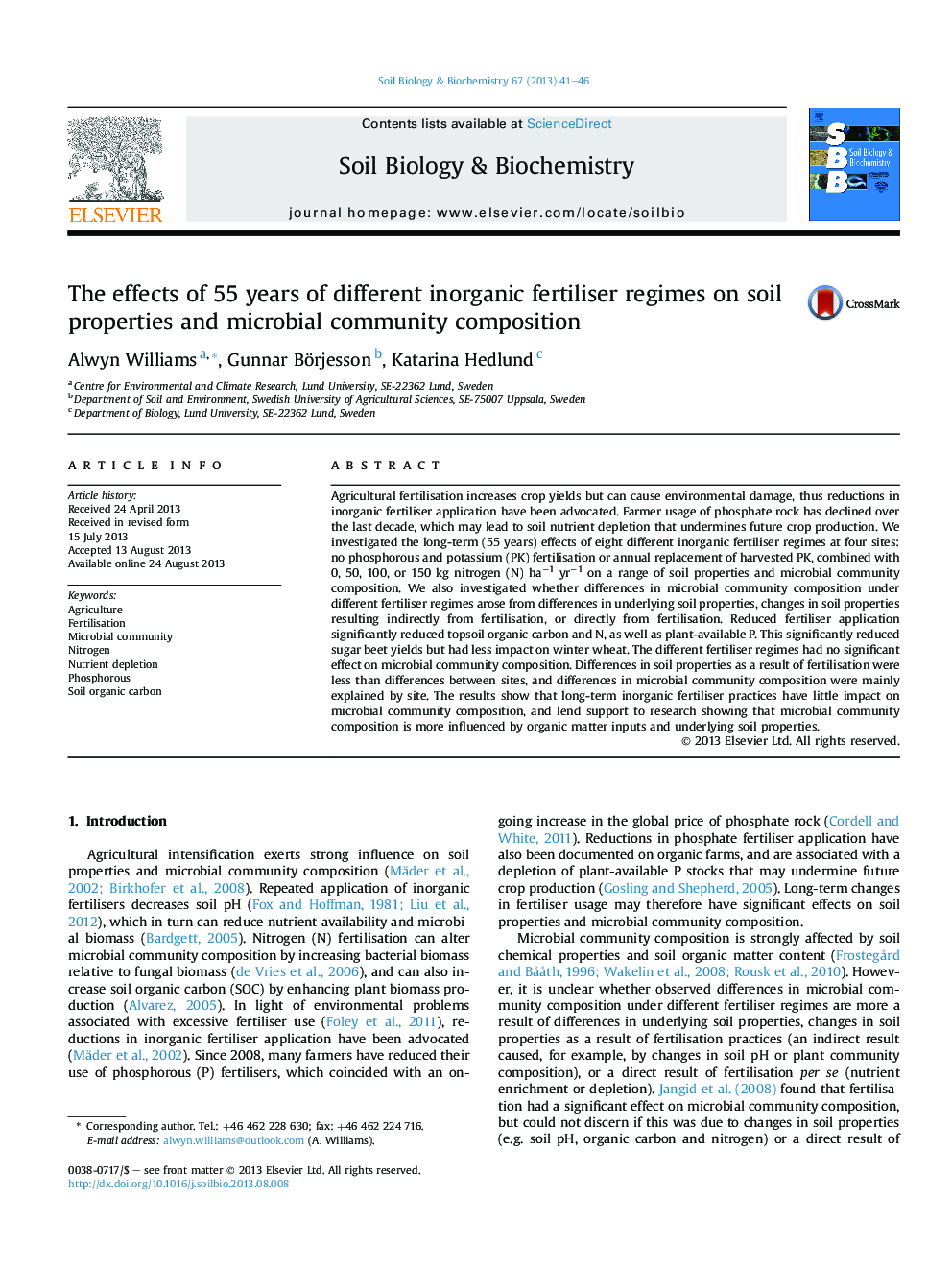| Article ID | Journal | Published Year | Pages | File Type |
|---|---|---|---|---|
| 8365008 | Soil Biology and Biochemistry | 2013 | 6 Pages |
Abstract
Agricultural fertilisation increases crop yields but can cause environmental damage, thus reductions in inorganic fertiliser application have been advocated. Farmer usage of phosphate rock has declined over the last decade, which may lead to soil nutrient depletion that undermines future crop production. We investigated the long-term (55 years) effects of eight different inorganic fertiliser regimes at four sites: no phosphorous and potassium (PK) fertilisation or annual replacement of harvested PK, combined with 0, 50, 100, or 150Â kg nitrogen (N) haâ1Â yrâ1 on a range of soil properties and microbial community composition. We also investigated whether differences in microbial community composition under different fertiliser regimes arose from differences in underlying soil properties, changes in soil properties resulting indirectly from fertilisation, or directly from fertilisation. Reduced fertiliser application significantly reduced topsoil organic carbon and N, as well as plant-available P. This significantly reduced sugar beet yields but had less impact on winter wheat. The different fertiliser regimes had no significant effect on microbial community composition. Differences in soil properties as a result of fertilisation were less than differences between sites, and differences in microbial community composition were mainly explained by site. The results show that long-term inorganic fertiliser practices have little impact on microbial community composition, and lend support to research showing that microbial community composition is more influenced by organic matter inputs and underlying soil properties.
Keywords
Related Topics
Life Sciences
Agricultural and Biological Sciences
Soil Science
Authors
Alwyn Williams, Gunnar Börjesson, Katarina Hedlund,
